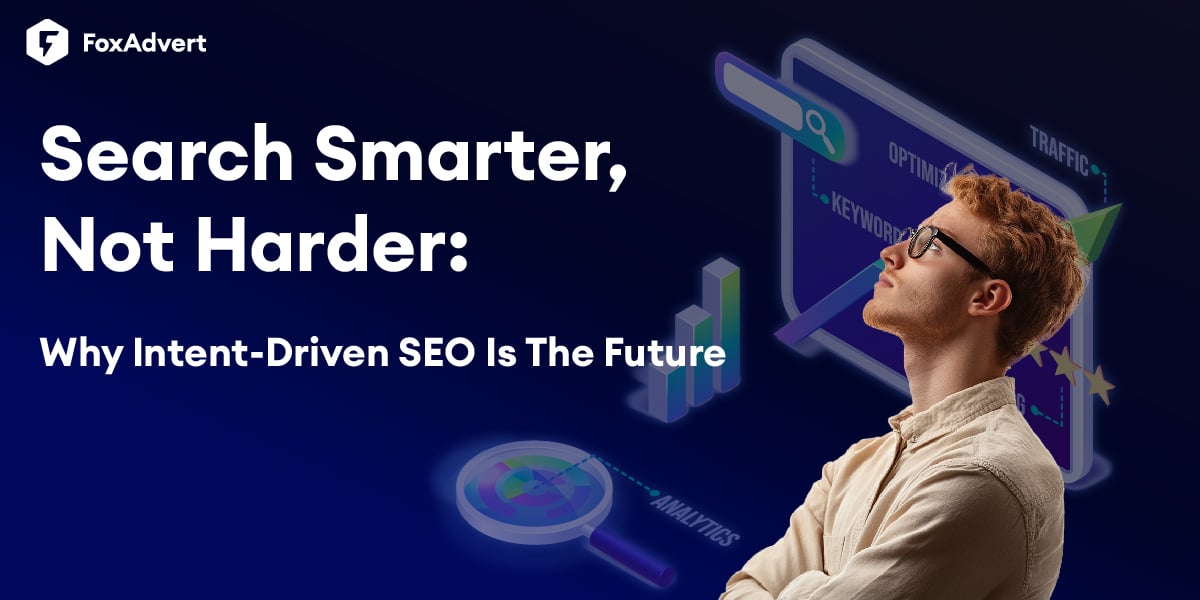
Search engine optimization (SEO) has undergone a seismic shift in the last decade. Where once keyword density and backlinks reigned supreme, the new frontier is user intent — a sophisticated understanding of not just what people search for, but why they search.
Thanks to advancements in artificial intelligence and natural language processing (NLP), search engine algorithms now behave less like machines and more like humans, AI are now capable of interpreting nuance, tone, and contextual meaning.
At FoxAdvert, we understand that staying ahead means going beyond keywords to map content to intent — a shift that is both technical and psychological.
Let’s explore how this evolution is reshaping the SEO landscape and what it means for businesses trying to reach and resonate with modern audiences.
Traditional SEO was relatively simple: identify the keywords your audience searches for, embed them strategically throughout your content, and hope to rank. While this approach still holds foundational value, it's no longer sufficient.
Modern algorithms powered by AI models like Google’s BERT (Bidirectional Encoder Representations from Transformers) and MUM (Multitask Unified Model) are trained on massive datasets to understand the relationships between words, phrases, and context.
These algorithms don’t just match terms; they assess the meaning behind a search.
Before BERT, many search algorithms used models like Word2Vec or earlier versions of NLP that processed language sequentially — typically from left to right (or right to left). This meant that when trying to understand a word in a sentence, the algorithm would mostly look at the words that came before or after it, but not both at the same time.
Example (pre-BERT approach):
In the sentence,"The bank was flooded after the heavy rain,"
the word "bank" could mean a financial institution or the side of a river. Traditional models might misinterpret it because they’d look only in one direction, say, just "The bank was flooded..." — and might miss the "after the heavy rain" clue.
BERT (Bidirectional Encoder Representations from Transformers) is built on a transformer architecture that allows it to look at both the words before and after a target word — simultaneously.
So in the sentence above, BERT considers the entire sentence when trying to understand what “bank” refers to. It looks at:
From this, it can infer that “bank” probably refers to a riverbank, not a financial institution — because flooding and rain are contextually related to geography and weather.
Because of this bidirectional understanding:
This shift necessitates content that mirors how humans think and inquire — conversational, structured, and empathetic to the user’s need.
Search intent often broken down into informational, navigational, transactional, and commercial investigation, is the underlying goal behind a user’s query. Understanding this intent allows businesses to create more relevant, targeted content that satisfies users and search engines.
Here’s how different intents play out in real-world scenarios:
If your content doesn’t align with the user's intent, it won’t convert — no matter how many keywords you use.
Thanks to deep learning and NLP, AI models have revolutionized how search engines “read” content. Google’s BERT update in 2019 was a game-changer. Instead of processing words in isolation, BERT interprets the full context of a sentence by looking at all the words before and after a term.
According to Google, BERT impacted 10% of all searches at launch — one of the most significant updates in the company’s history.
Fast forward to MUM, launched in 2021, and the capabilities expand even further. MUM can analyze images, video, and text in 75+ languages and provide answers based on holistic understanding — not just strings of data.
What does this mean for marketers? Content needs to be crafted for meaning, not just metadata.
High-ranking content today must:
Semantic SEO means building content clusters around core topics. Instead of producing 10 articles for 10 variations of a keyword, you create one in-depth piece and several supporting articles that link together contextually.
This internal linking strategy helps search engines map your site’s semantic relevance — a huge factor in rankings today.
Learn more: How To Create Content Clusters For Your Business Website
With the rise of voice assistants (Siri, Alexa, Google Assistant), searches are becoming more conversational. “Best pizza near me” turns into “What’s the best deep-dish pizza place open now within 10 minutes?”
Your content must reflect natural language. Use FAQs, long-tail keywords, and answers written the way people speak.
Learn more: Voice Search SEO: Optimize for Natural Language Queries
Tools like Google Search Console, SEMrush, and SurferSEO now provide intent data. Brands can use this insight to refine their content, not just around keywords, but around how users behave before, during, and after a search.
Search algorithms will continue evolving but the trajectory is clear. Search is becoming more intuitive, predictive, and human-like. To thrive, brands must stop thinking like machines and start thinking like their customers.
Understand the why behind every query, not just the what, and you'll position your content and your brand for a lasting visibility.
In the age of AI, the most powerful SEO strategy is surprisingly human: empathy. The better you understand your audience, the better you’ll rank.
Need help turning this philosophy into performance? As leaders in SEO, FoxAdvert specialize in aligning AI-era search intelligence with real-world business goals.
Let’s build a content strategy that meets intent and exceeds expectations.
Don't miss out on long-term growth. Book a consultation with FoxAdvert today and start building a sustainable digital marketing strategy. Schedule your free strategy session now!